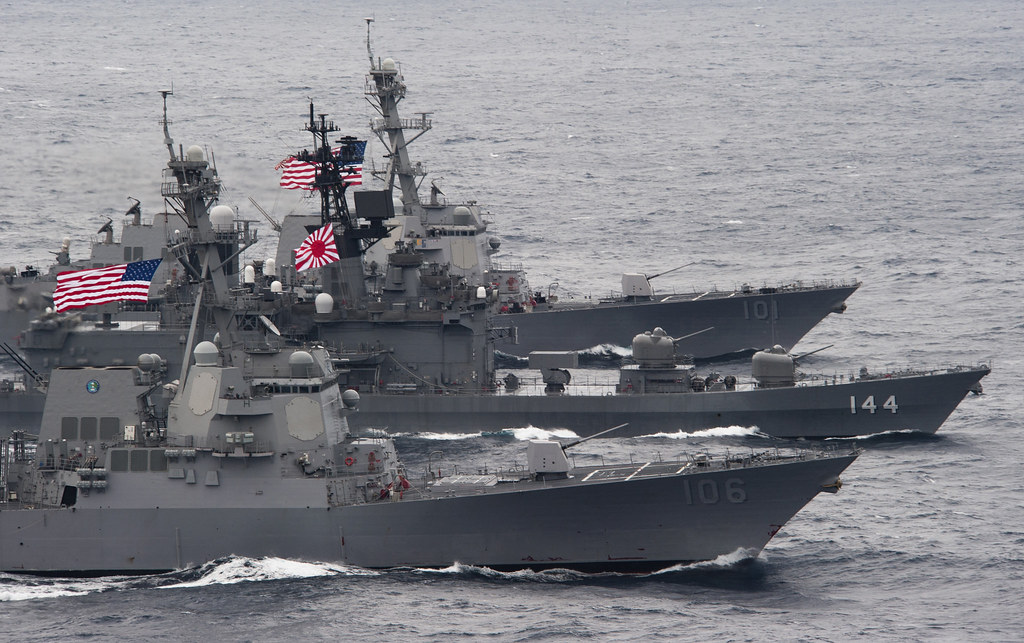By Ankit Panda
Don’t let the current defense guideline overhaul fool you. The broad contours of the U.S.-Japan alliance won’t change.
Under their 1960 Treaty of Mutual Cooperation, the United States and Japan are military allies. Additionally, Japan’s post-war constitution restricts its ability to wage war, committing it to pacifism and the use of a limited military for the purposes of self-defense exclusively. To complement its limited self-defense capability, Japan relies on a robust United States military presence within its territory to ensure its broader security. For the longest time, numerous officials on both sides described the underlying military and strategic dynamics of this partnership as that of a “spear and shield.” The United States’ formidable offensive capabilities were the “spear” to be paired with Japan’s “shield.” After all, Japan, with its aptly named Self-Defense Forces, could hardly aspire to much more given the circumstances.
The “spear and shield” metaphor is to be contrasted with earlier characterizations of Japan’s post-war defense posture as that of a hedgehog — a meek rodent with an nonthreatening bite, but protected from every angle by its spines. In the 1970s, the Ground Self-Defense Forces spoke in favor of a “hedgehog defense” strategy, calling for Japan to hunker down with the bare minimum required for self-defense. It wasn’t until U.S. President Ronald Reagan and Japanese Prime Minister Zenko Suzuki’s defense consultations in the early 1980s that the seeds of the contemporary “sword and shield” balance was set. As Glenn D. Hook remarks, the shift in metaphor was significant: “The purely defensive image of the hedgehog is thus replaced with an image of both defense (Japan) and offense (United States).” Later in the 1980s, Japanese Prime Minister Yasuhiro Nakasone referred to Japan as an “unsinkable aircraft carrier” — a controversial metaphor considering that was precisely what U.S. forces on the eastern front called Pacific atolls and islands during the campaign against Imperial Japan. In the context of the Cold War, an unsinkable U.S. carrier off the Soviet Union’s eastern frontier was a provocative image.
Read the full story at The Diplomat

